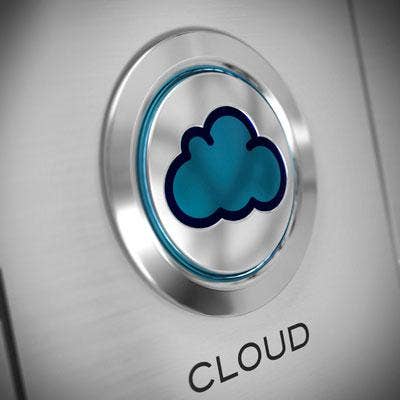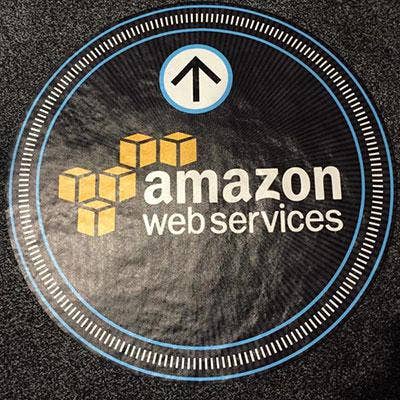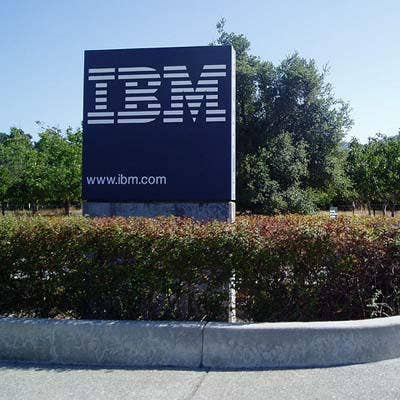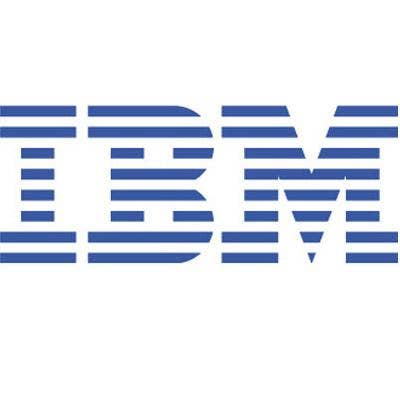Here's Who Made Gartner's 2018 Magic Quadrant For Cloud IaaS

Only The Hyper-Scalers Remain
Last year's Gartner Magic Quadrant for Cloud infrastructure-as-a-Service was chock full of cloud providers. The 2017 report even picked up a few companies from the previous year, seeming to suggest the trend of market consolidation in the industry was subsiding.
But the researcher modified its evaluation criteria in 2018, limiting its analysis to vendors that could, or were, developing capabilities to deliver strategic cloud adoption across a broad range of use cases.
That drastically pared the field while also pushing several surviving providers into a lower quadrant.
Gartner found only six hyper-scale cloud operators worthy of inclusion in its latest report. The industry's Big 3 -- Amazon Web Services, Microsoft Azure and Google Cloud Platform -- all made the Leaders Quadrant. Oracle, Alibaba and IBM couldn't do better than Niche Player status.
Rackspace, NTT Communications, Virtustream, Skytap, Fujitsu, Interoute, Joyent and CenturyLink all fell off the Quadrant entirely.

Methodology
The Gartner Magic Quadrant ranks cloud vendors on two criteria: Ability to Execute and Completeness of Vision.
Execution is represented on the Y-axis of Gartner's chart; vision on the X-axis. That lands competitors into one of four quadrants: Niche Players (low in both criteria), Visionaries (complete vision but lacking execution), Challengers (good execution but lacking vision), and Leaders (excelling in both vision and execution).
Among the six providers evaluated this year, three landed in the Leaders Quadrant (Amazon Web Services, Microsoft Azure and Google Cloud Platform), and the three others were relegated to Niche Player status (Oracle, Alibaba, and IBM).

Leader: Amazon Web Services
More than a decade after pioneering the market, AWS remains atop the IaaS pack, both as a go-to cloud for most types of organizations, and a thought leader for integrated IaaS and PaaS.
Amazon's most-profitable division closed out last year with a revenue run-rate exceeding $20 billion.
"It continues to aggressively expand into new IT markets via new services as well as acquisitions, adding to an already rich portfolio of services. It also continues to enhance existing services with new capabilities, with a particular emphasis on management and integration," Gartner noted.
But it's best to work with a systems integrator when taking on large digital transformation efforts, Gartner noted.
AWS is "still adapting to the emergence of meaningful competitors." And competitors copying its ideas "sometimes have the opportunity to improve on the implementation or service construct."
Amazon Web Services
Strengths: Amazon is largely viewed as the "safe choice" when selecting a cloud, "appealing to customers that desire the broadest range of capabilities and long-term market leadership."
That's because it's the most mature and enterprise-ready provider with "the most useful partner ecosystem."
More than 2,000 AWS consulting partners offering managed and professional services ease implementation, migration and management.
Cautions: It still takes a lot of expertise to implement Amazon's extensive service portfolio. Getting started is easy -- achieving optimal use, leveraging service innovations and best practices, and cost management can be challenging for even expert organizations, "including AWS partners," according to Gartner.
With more MSPs entering the AWS partner program of late, that designation is becoming less of an assurance of MSP quality.
But the MSP program is "still the best way to identify partners that use AWS best practices," especially when also considering DevOps and Migration partner competencies.
Leader: Microsoft Azure
Microsoft is the perennial runner up in the IaaS Magic Quadrant, though the Azure cloud scores almost as high as AWS on the Completeness of Vision axis.
The technology giant's commitment to cloud services has been rewarded with significant market success, Gartner said.
Azure offers a broad range of services, and "Microsoft has steadily executed on an ambitious roadmap."
The Azure cloud has been growing fast in the last few years. Gartner estimates Microsoft closed 2017 with a revenue run-rate for integrated IaaS and PaaS exceeding $4 billion.
Microsoft Azure
Strengths: Azure's "core strength is its Microsoft heritage" -- integrations with other Microsoft products and services, and the ISV ecosystem, drive adoption.
"Customers that are strategically committed to Microsoft technology generally choose Azure as their primary cloud provider."
Microsoft is doing a good job leveraging its sales reach and ability to bundle Azure with other Microsoft products, like Office 365, to drive adoption.
Cautions: Gartner said some enterprises requiring large implementations have seen challenges deploying Azure.
Most often that was because Microsoft's sales, field solutions architects and professional service teams did not have an adequate technical understanding of Azure. Technical support personnel sometimes also lack adequate knowledge.
"Customers shouldn't underestimate the expertise required to properly implement Azure in a performant, reliable and secure fashion," the researcher noted.

Leader: Google
Google broke into the Leaders quadrant in 2018, joining AWS and Azure in that exclusive club. It still lags its two main rivals significantly on both axes.
Google Cloud Platform benefits from the Internet giant's massive investments in infrastructure to power its consumer services. Google's strategy centers on commercializing that internal technology and making it available for other companies to purchase.
While Google is known for offering cloud-native capabilities to cutting-edge customers, the "roadmap of capabilities increasingly targets customers with traditional workloads and IT processes" as well, Gartner noted.
Strengths: Google has positioned itself as a provider of open solutions, and is leveraging open source ecosystems to emphasize portability while also delivering proprietary technology to automate operations at scale.
GCP offers "reliable and performant core" IaaS and PaaS services with an "increasing number of unique and innovative capabilities," Gartner said, especially differentiating around analytics and machine learning.
Cautions: Google has made progress building an ecosystem around its IaaS cloud, but still has few experienced MSP and infrastructure-centric professional services partners.
"GCP's own professional services are treated as profit centers rather than loss-leaders to drive customer implementations," Gartner said.
While GCP positions itself as the cost leader in the market, its deepest discounts usually are applicable to one-year contracts.
"Google is frequently rigid in contract negotiations, save for its largest customers," according to Gartner.

Niche Player: Alibaba Cloud
Last year, the Chinese e-commerce giant broke into the Gartner Magic Quadrant with a cloud that had finally achieved global reach.
At the same time, Alibaba Cloud remains the market leader in China, and performs particularly well for Chinese digital businesses and agencies within the Chinese government.
Parent company Alibaba Group has the financial resources to continue investing in global expansion, building out into new regions with international-specific engineering efforts and delivering regional sales, support, and marketing, Gartner said.
But "Alibaba Cloud has substantial challenges that it must overcome before it can translate its success in China to markets outside of its home territory," the researcher said.
Alibaba Cloud
Strengths: Alibaba has built "an impressive ecosystem" of MSPs and ISVs in China, and has succeeded in extending that ecosystem into global markets.
That expanding network of partners creates the potential for Alibaba to become an alternative to the global hyperscale cloud providers in some regions over time.
The company continues to aggressively invest in research and development, with a focus on achieving feature parity with other hyper-scalers.
Cautions: Alibaba's focus on feature parity has left its international offering with little in the way of unique differentiation from other global hyperscale providers.
Alibaba Cloud still needs to build technical and go-to-market capabilities for traditional enterprises with non-cloud-native workloads, especially Microsoft Windows-based workloads.

Niche Player: Oracle
Last year, the software and systems giant made a strong debut on Gartner's Magic Quadrant as a Visionary. But Gartner's modified evaluation criteria has dropped Oracle into Niche Player status in this year's Quadrant.
Oracle launched its first IaaS offering in late 2015 with the Oracle Compute Cloud Service. In November 2016, Oracle introduced Oracle Bare Metal Cloud Services.
That "Gen 2" cloud "is still in an early stage of maturity," Gartner noted.
Oracle, however, has been realistic with its late entry into the market, "and has a sensible engineering roadmap focused on building the capabilities necessary for targeted use cases."
Oracle has reliably met engineering timelines, partly by recruiting technical and product leaders from other hyper-scalers, according to Gartner.
Oracle
Strengths: Oracle has focused on delivering an integrated stack, with a cloud strategy "anchored by its applications, database and other middleware."
The IaaS products are "primarily an infrastructure foundation for its other businesses."
"Oracle's Gen 2 offering has a well-designed hyperscale cloud architecture, a thoughtful selection of current and future features, an emphasis on capabilities related to Oracle workloads, solid reliability and performance, and a competitive price point," Gartner noted.
Cautions: Oracle's Gen 2 cloud is still a bare-bones offering -- too minimal to be viable for a broad range of common use cases.
Oracle is just beginning to build out a partner ecosystem, and MSPs are sometimes reluctant to support Oracle's cloud infrastructure.
Gartner also noted Oracle's "high-pressure sales tactics" around selling IaaS, including software audits and threatening to dramatically raise database license costs for customers selecting other cloud providers.

Niche Player: IBM
Gartner's shifting criteria knocked IBM out of the Visionary quadrant this year.
IBM is in the process of phasing out the SoftLayer and Bluemix brands for a general IBM Cloud brand. IBM still has two portals, each with distinct services, for cloud IaaS -- the IBM Cloud portal (formerly Bluemix) and the SoftLayer portal.
IBM is still working on its Next-Generation Infrastructure (NGI) engineering project to produce a new set of cloud IaaS offerings, including compute infrastructure. That work looks to remove some vital capability gaps for SoftLayer, with the introduction of capabilities including software-defined networking (SDN).

IBM
Strengths: IBM benefits from a strong brand and existing customer relationships across the globe.
The technology stalwart is looking to leverage those assets to help customers still using legacy technologies, especially mainframes, transition to the cloud.
"IBM intends its service businesses to assist these customers through the cloud transformation journey," Gartner noted.
Cautions: IBM still hasn't shared details of its Next-Generation Infrastructure project. And throughout its history providing IaaS services, IBM has "repeatedly encountered engineering challenges that have negatively impacted its time to market."
That uncertain roadmap presents risks to customers, Gartner noted.
As to reliability, the SoftLayer cloud experienced several significant outages in 2017, some related to upgrades, as well as downtime in 2018 from patching for Spectre and Meltdown vulnerabilities.
"IBM is working on improving its ability to conduct non-disruptive maintenance," Gartner said.